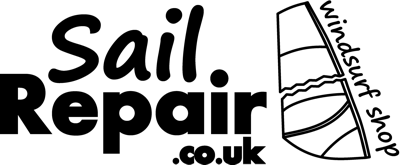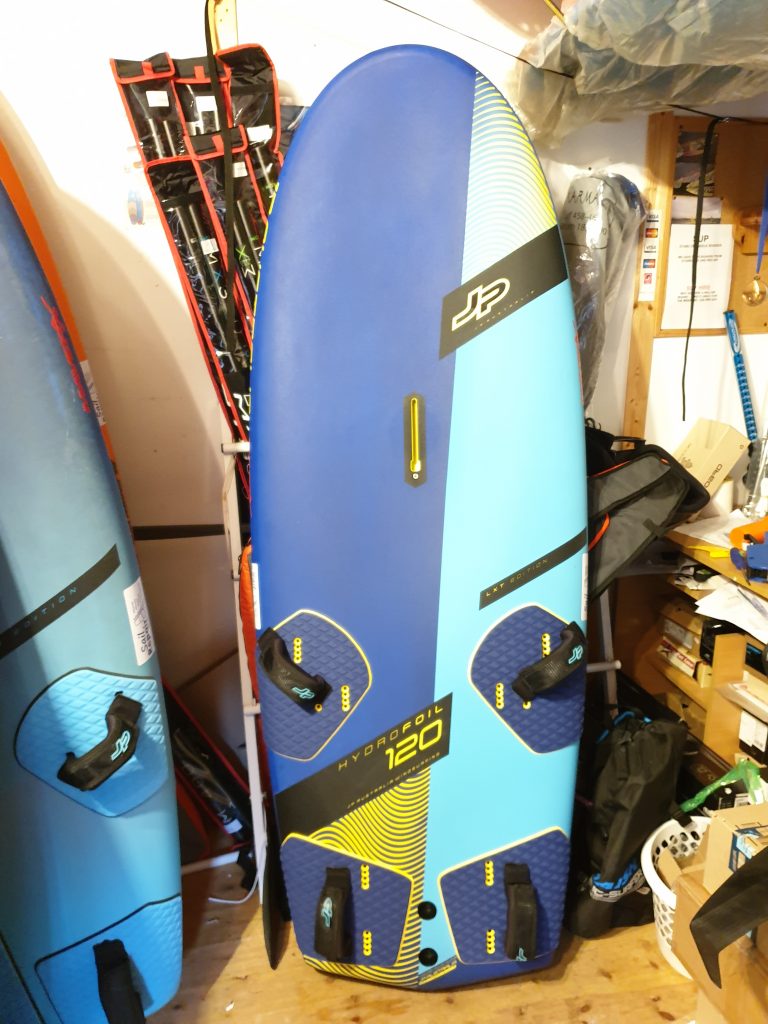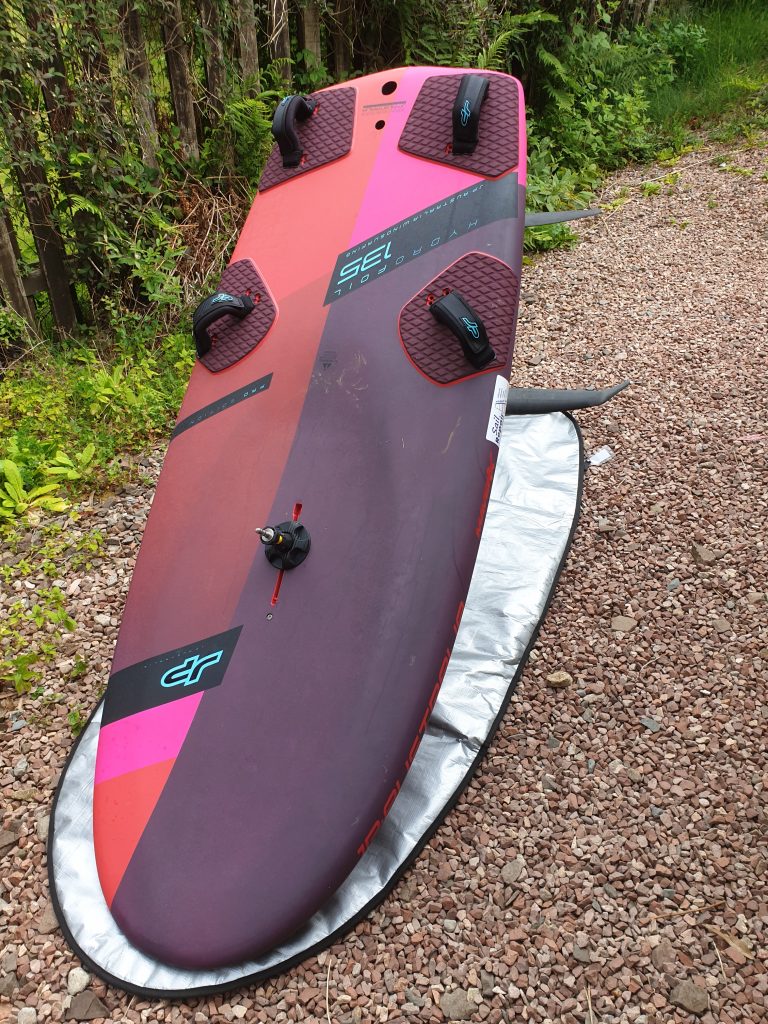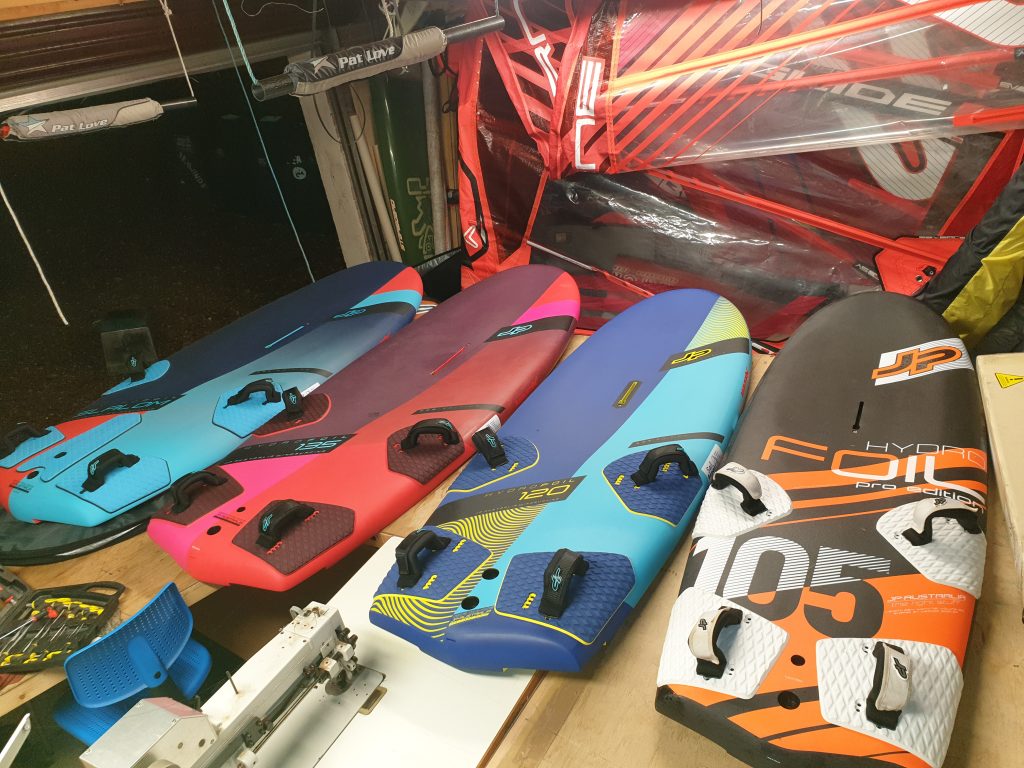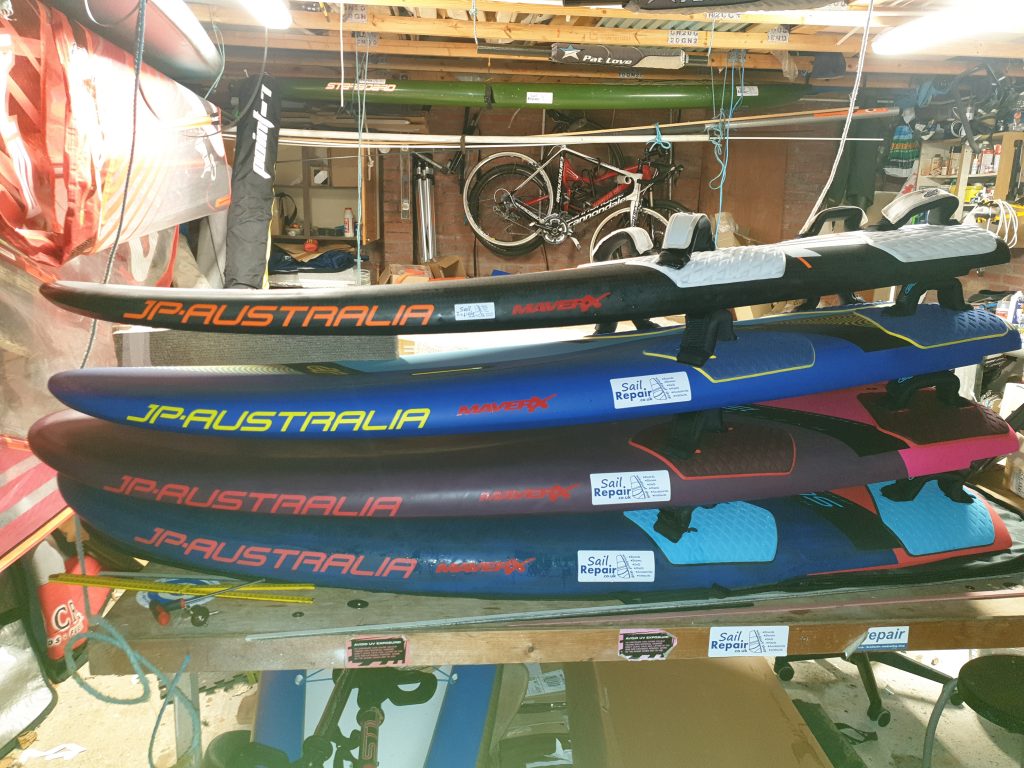This is a new board for 2022. Before I continue with the review I would like to point out that this board is made in the Patrik factory in Ukraine. While our thoughts are for everyone in Ukraine they are particularly for the employees at the factory and their families.
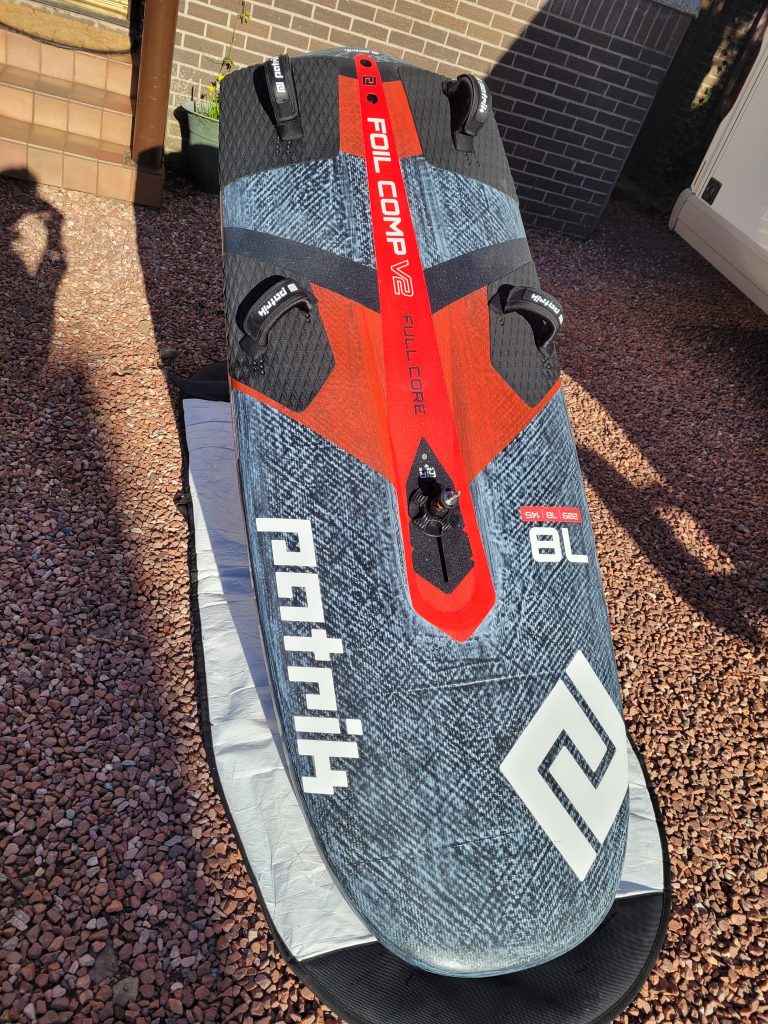
This board is unmistakably made as a competition board with its sights firmly set at PWA highwind foil slalom, however this review is not done in a competitive environment and is more of a comparison to other foil boards. It may help if this review is read in conjunction with my review on the Foil- Comp 91. I have used the board from over powered with a 4.2 (30 kts) to marginal “gust hunting” with a 7.0. I have used the board with an AFS W95 with R810 and R660 wings.
First impressions – From above the board looks very much like a scaled down version of its big brother the Foil-comp 91 which was released in 2021 and a board I have spent a lot of time on. Compared to the 91 it does have an extra row of inserts for the back strap. The two rows are only about 2cm apart so it is for fine tuning rather than offering an inboard or outboard rear strap option. The front strap is the same as on the 91 – allowing you to alter the angle of the strap to suit your sailing stance. The mast track is recessed the same as the bigger boards and also the same distance from the tail/foil.
Flip to board over and you immediately notice the size of the cut outs, they are massive. The cut outs extend right up to underneath the front footstraps.
Length – 209cm, width 78cm, volume 145 ltrs
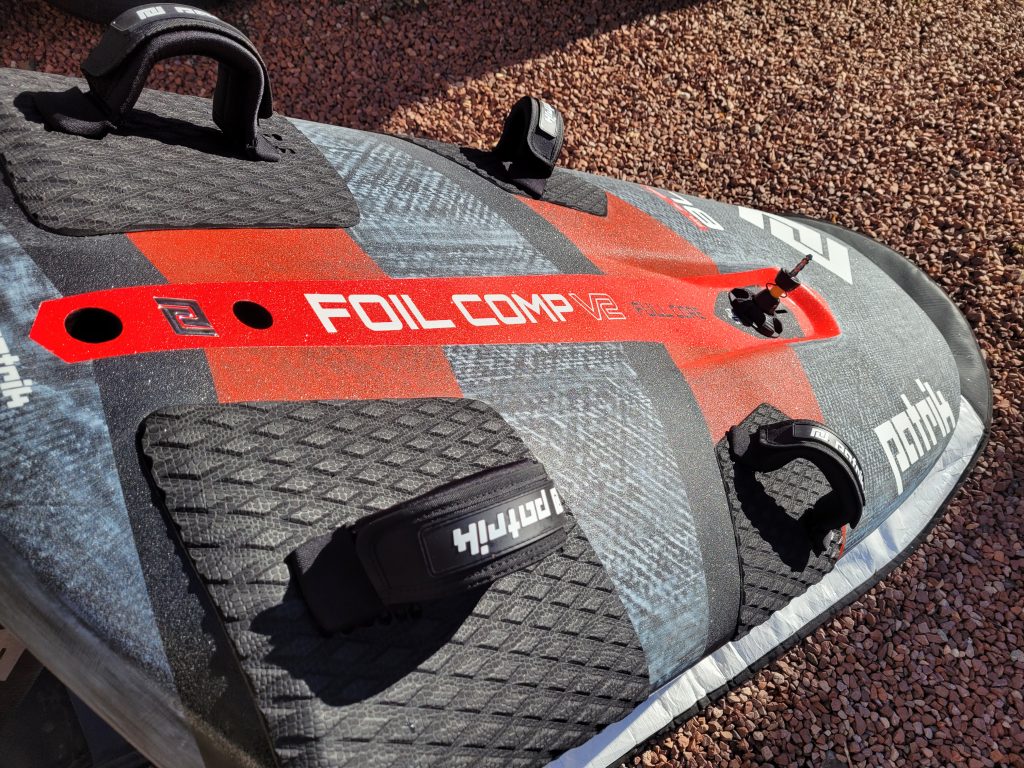
On the water – Being used to the Foil-comp 91 the board feels very familiar. It is stable to uphaul and sail along waiting for a gust. As you would expect from the volume there are no issues with the board supporting the heaviest of sailors at rest. Getting the board to the water in strong winds is a bit more manageable than with a bigger board. The cutaways at the tail make it easier to grip.
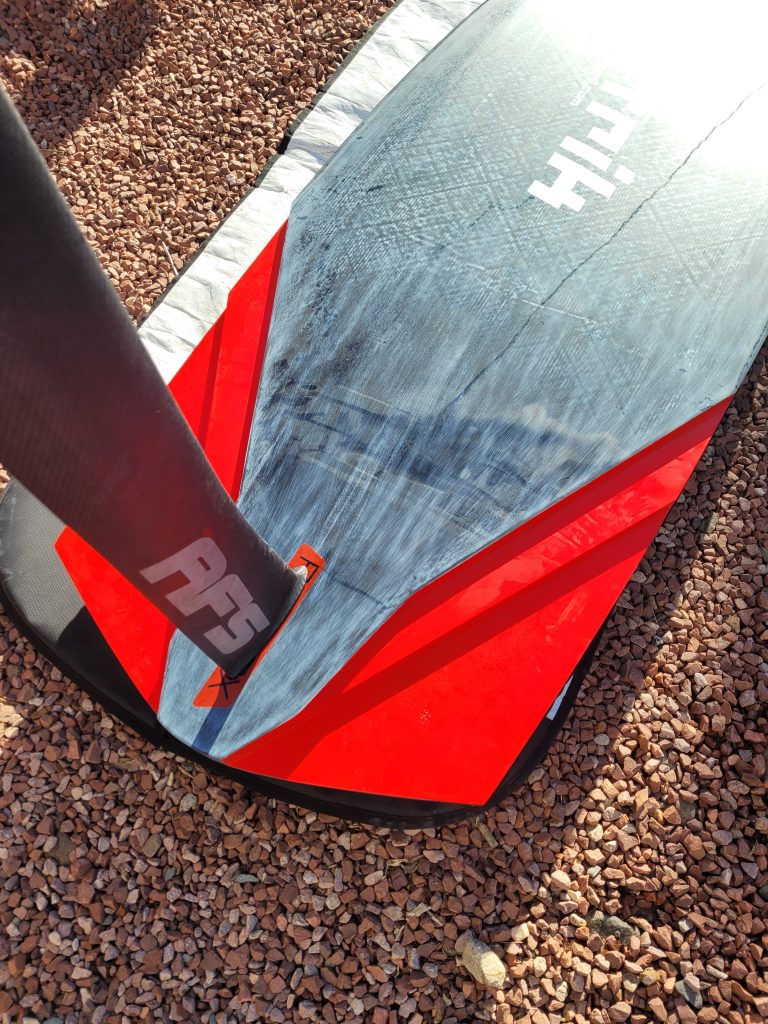
Getting flying – The board offers plenty of support allowing you to get into the front strap early. When you have plenty of sail power the board releases without any effort. You can hardly feel the release, this is where the large cutouts come in. Due the very small surface area under the tail it is easy to initiate the take off with slight back foot pressure. When there is less sail power and you have to accelerate to take off speed the cutouts are noticeable. In light winds I try to get a gust in the wind to coincide with a slight downslope in the chop (no water is ever truly flat). I pump the sail and the board accelerates a bit, pump it a bit more and it is like the board changes gear and the acceleration increases. It is the board riding up onto the steps in the cut out and it is just like changing gear in a car. I think it is important to use an efficient high aspect wing that will allow the board to accelerate and not to act like a brake. The result is that the board will fly early in light winds but you would be missing so much potential if you are passive about your take offs.
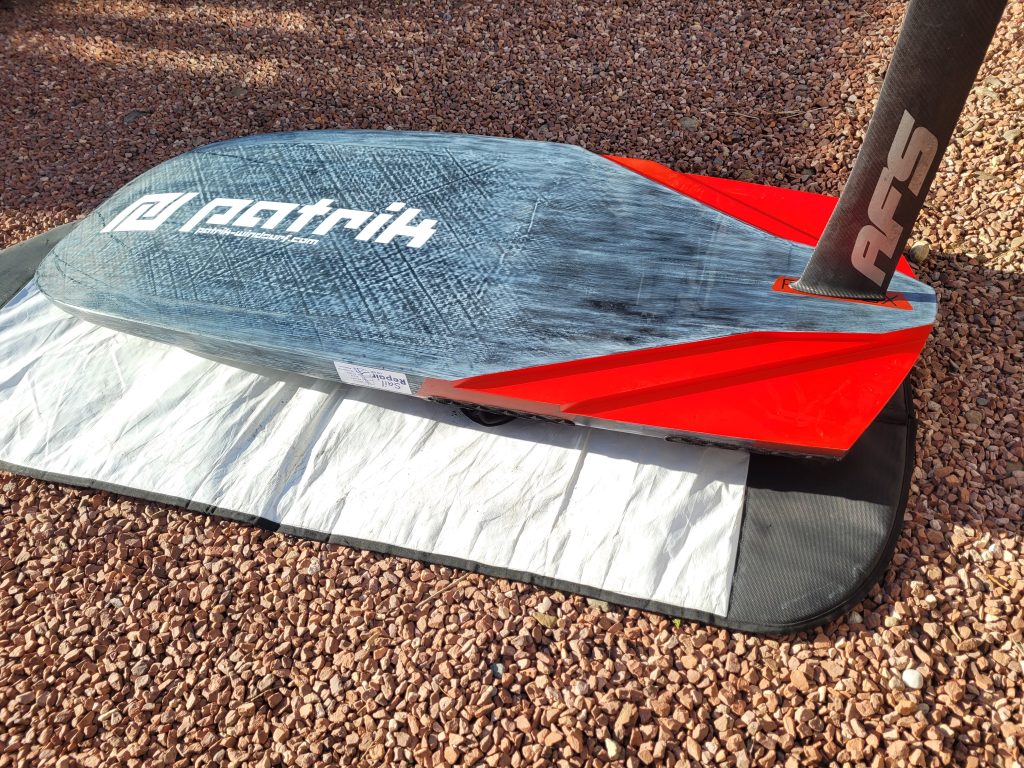
In flight – The board is comfortable in flight as it should be considering all the footstrap fine tuning options. The ride is comfortable and controlled at all angles to the wind. The lowered mast track position helps steady the flight. As you would expect with 78cm width the board will not point as high into the wind as it’s bigger brother the 91cm. Interestingly for competition use the board is recommended for sails up to only 6.5 while I found it very comfortable with a 7.0 and it would probably take a 7.5. But I guess the recommendation comes from the fact that at the top level a wider board would be faster once you are onto 7.0+ sails.
Gybeing – The board is easy enough to gybe whether you are overpowered with a small wave sail or powering into the turns with a large race sail. Height corrections are easy and predictable. When gybing in rough water you have to accept a few touches with the top of the chop otherwise you risk over-foiling and this is one of the most noticeable features of the board. On most boards you feel every touch sucking at your speed and momentum but on the Foil-Comp 78 you can hardly feel them. It doesn’t matter if the touch is a “flat skim” or if a wave tries to grab a rail while the board is banked over, the board carries on regardless. The result is you can gybe at a lower/safer height without paying a “speed out of the gybe” penalty. It is not a small board so it doesn’t have that nimble feeling of a small foil board but what it offers instead is a stable and predictable platform from which to push your foiling into higher winds
Overall – The Foil Comp 78 at 145 ltrs might have the volume of other boards that you consider as light wind foil boards but the 78 is so much more. Undoubtedly this board will be competitively quick around a slalom race course at PWA level but the board offers high wind comfort and control to average ability sailors. It could easily be a one foil board for anyone intent on foiling across a wide range of wind strengths. The only area where it could be bettered is in the light wind super efficient style of foiling with large foil race sails, that is where it’s big brothers come in.
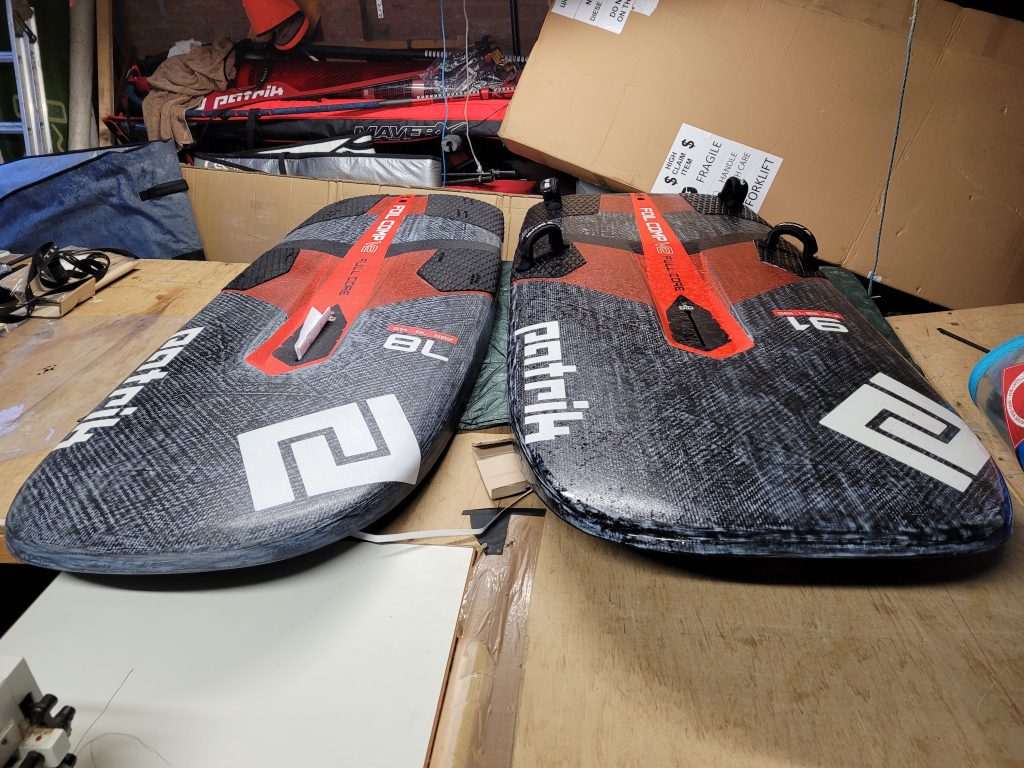
In conclusion the take away impression of the Foil-comp 78 is that it showcases just how effective cutaways under the board can be and in that department few designers can match Patrik.
